Protruding Objects [4.4].
Requirements in 4.4 are based on standard cane techniques used by people with vision impairments. There are two principal techniques: the touch technique and the diagonal technique. People are often trained to use both. The touch technique involves arcing the cane side-to-side to detect points beyond both shoulders and is often used in uncontrolled areas. The diagonal technique involves holding the cane in a stationary position diagonally across the body with the bottom tip at the ground beyond one shoulder and the grip extending beyond the other shoulder. This technique is generally used in certain controlled and familiar environments. The standard sweep of canes allows detection of objects with leading edges up to 27 inches from the floor.
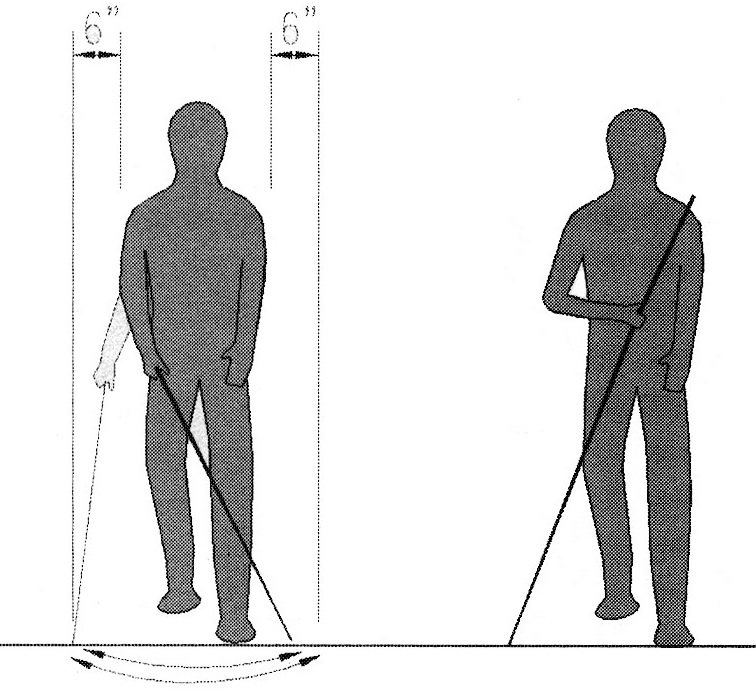
Scoping [4.1.2(3), 4.1.3(2)]
Requirements for protruding objects apply to all circulation routes, including both accessible and inaccessible routes and include corridors, walks, courtyards, stairways, and areas of circulation.
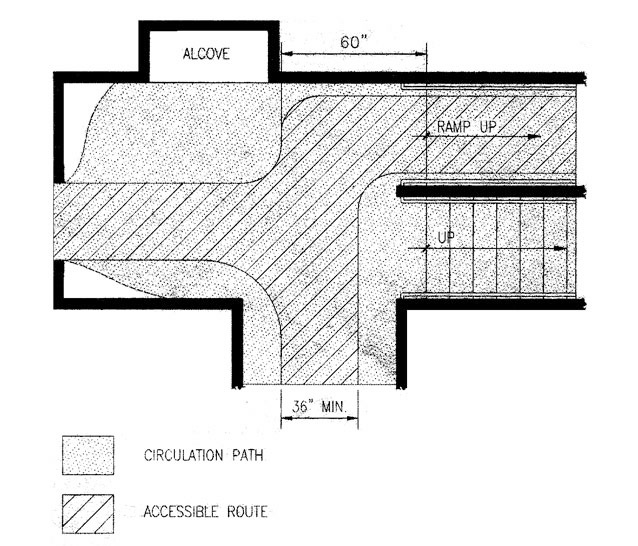
Wall-Mounted Objects
Proper cane and service animal techniques allow people to walk along a corridor or path without bumping into walls. Overhangs that are above cane sweep height may protrude 4 inches without being hazardous. Objects within the sweep of canes (at or below 27 inches) or above 80 inches can protrude any amount.
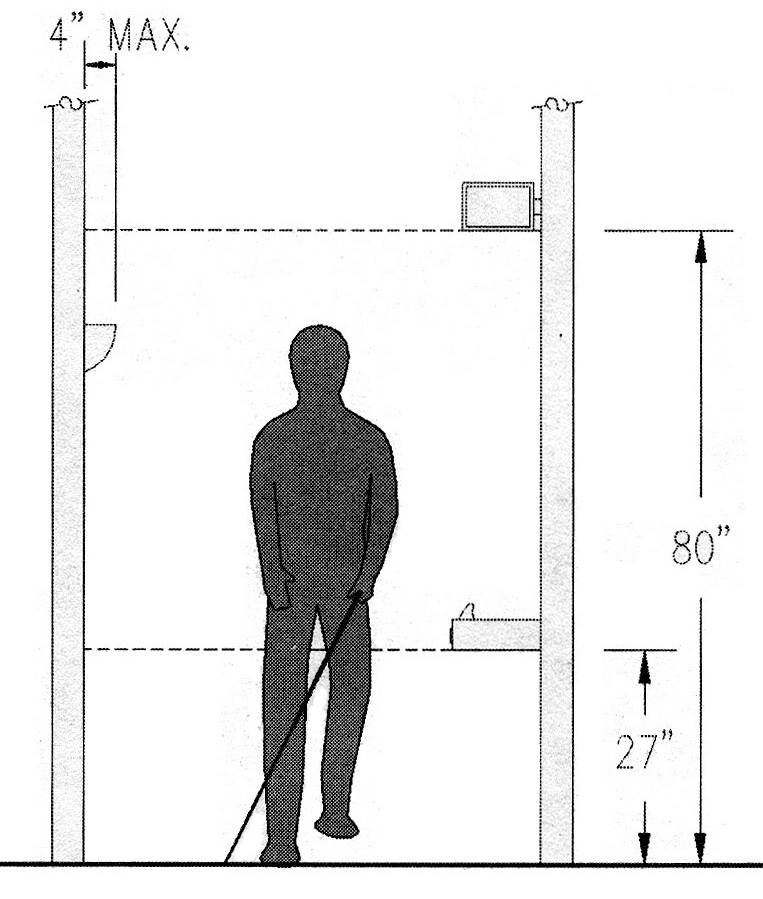
Wing walls, side partitions, and alcoves or recesses can be used for elements such as drinking fountains with their bottom edges above 27 inches. Fixed elements or barriers can provide detection below objects not required to have knee or toe clearance.
Free-standing and Post-mounted Objects
Where objects are mounted above 27 inches from the ground or floor, overhangs are limited to 12 inches. This is based on standard measures for cane sweep. Objects with leading edges at or below 27 inches or above 80 inches can protrude any amount.
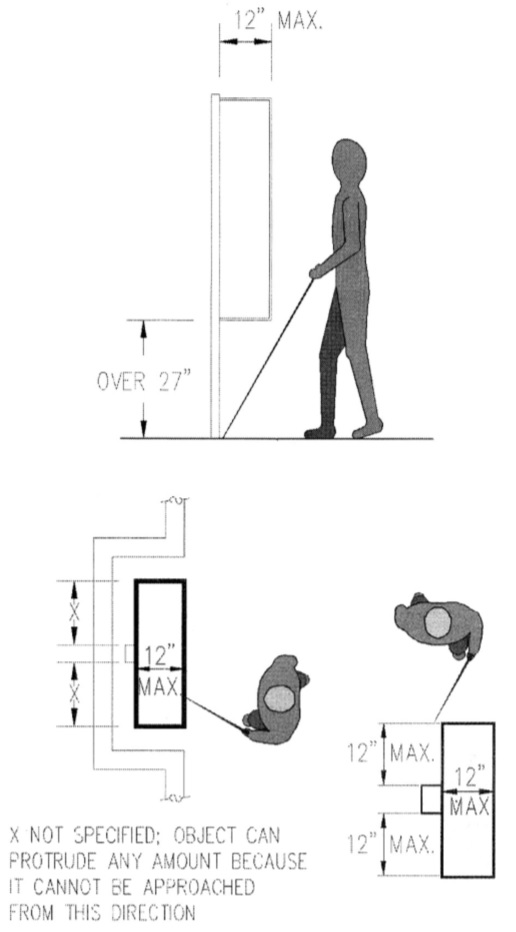
Head Room [4.4.2]
Circulation paths must provide at least 80 inches of vertical clearance. Otherwise, fixed barriers detectable by canes must define areas with less clearance. Gates, rails, curbs, and other fixed elements, such as planters, can serve as barriers. This is important at open stairways and along sloped walls.
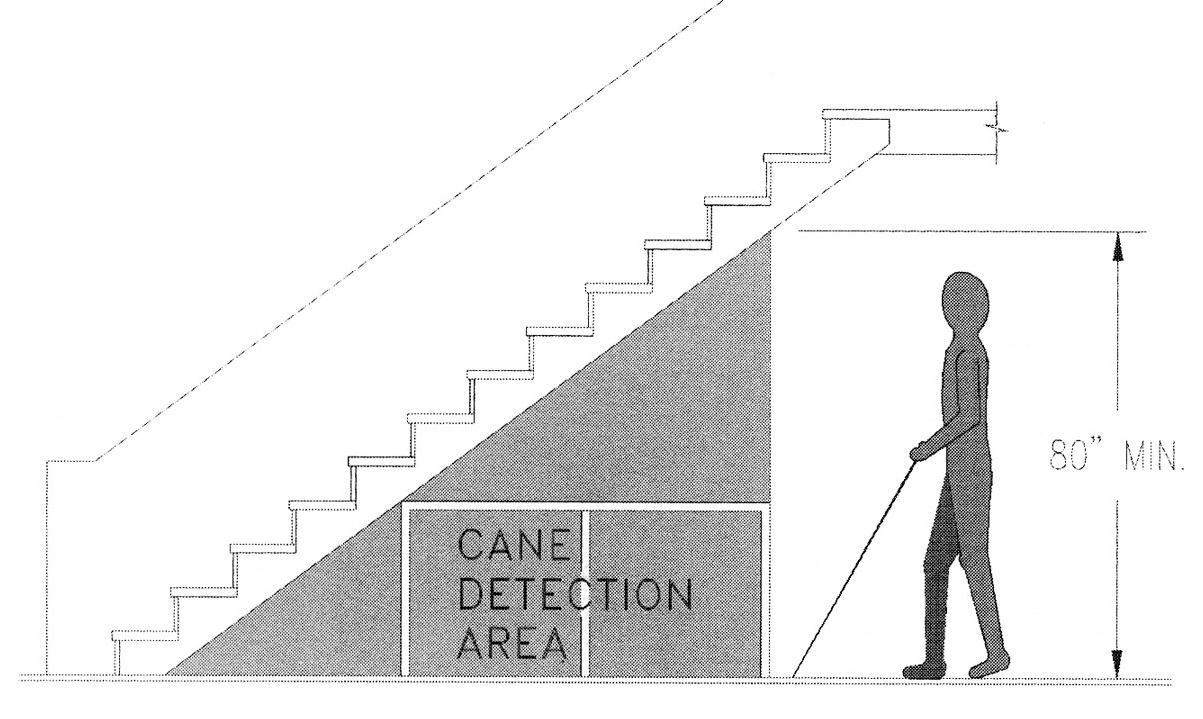

User Comments/Questions
Add Comment/Question